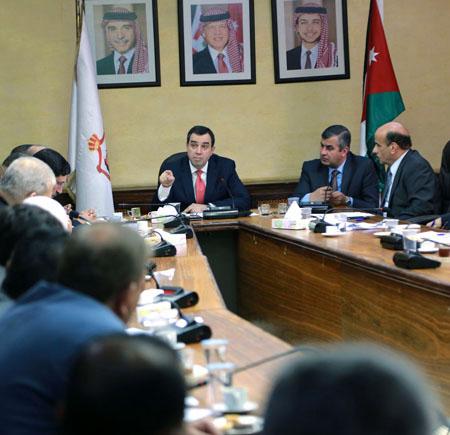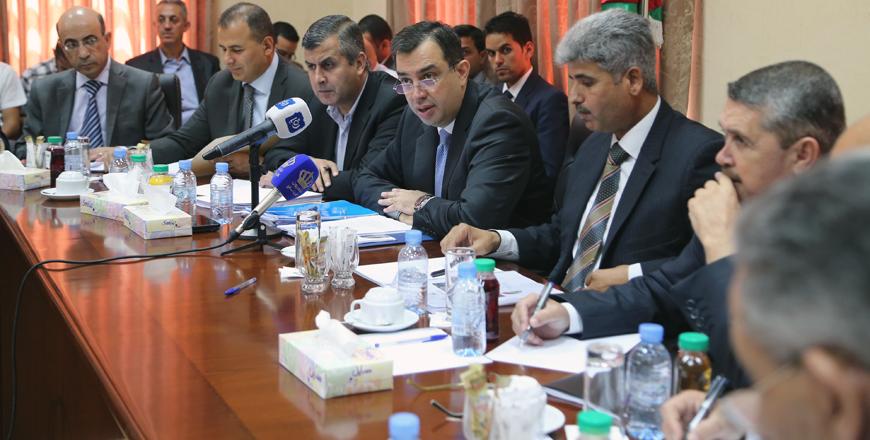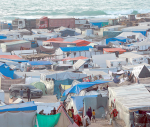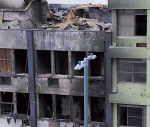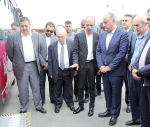You are here
Gov’t team concludes field visits to discuss governorate development programmes
By Laila Azzeh - Sep 06,2015 - Last updated at Sep 06,2015
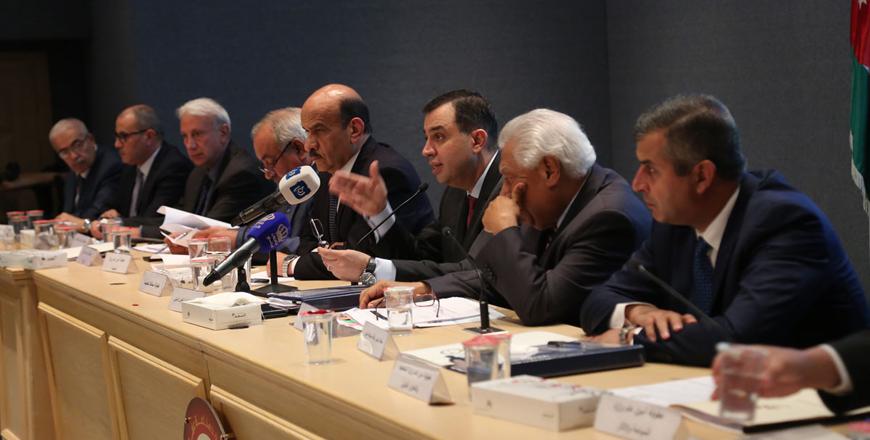
Planning and International Cooperation Minister Imad Fakhoury speaks at a meeting in Amman on Sunday to discuss 2016-2018 development plans for the governorate (Photo courtesy of Planning and International Cooperation Ministry)
AMMAN — The concerns of Ammanis were the highlight of a meeting that brought together a government team with the local community and representatives of various sectors on Sunday.
Challenges facing the capital, its districts and villages dominated the talks, which concluded the government’s field visits to governorates to discuss and prepare a comprehensive development plan for the period between 2016 and 2018.
Unemployment, poverty, pollution, lack of leisure facilities for young people and the failure to utilise prominent archaeological sites were the main worries of Amman’s nine districts, which are also suffering from the influx of Syrian refugees, who impose pressure on the already “poor” services and infrastructure, according to mayors of areas affiliated with the capital.
“There are 90,000 residents in Sahab, in addition to 40,000 Syrian refugees. Sahab city was recently announced as an environmental disaster area and it has the highest rate of cancer patients compared with other regions in Jordan,” said Sahab Mayor Abbas Maharmeh.
Moreover, he noted that one resident doctor at the Jamil Tutanji emergency room deals with 1,000 patients a day, calling for serious intervention to improve the situation in the district.
Ayed Hukeish, Um Rasas mayor, said the district has been lacking a telecoms network since 2010 and suffers from a “bad” wastewater network.
During the meeting, Planning and International Cooperation Minister Imad Fakhoury announced the details of the draft 2016-2018 Amman Governorate Development plan, which puts the poverty rate in the capital at 30.6 per cent.
According to the plan, residents of Amman Governorate are estimated at around 2.6 million, which makes up 38.7 per cent of the overall population.
As for the challenges, the draft cited a high population rate between the ages of 15 and 64 in the governorate, standing at 61 per cent of residents, compared with 59.4 per cent in the same age bracket in other governorates, a matter that requires more capital spending on vocational and technical training programmes, increasing investments and supporting micro-enterprises.
Fakhoury said the estimated cost of development projects for 2016 is JD111 million, while it stands at JD122.390 million for 2017, and JD131.121 million for 2018, according to a ministry statement.
He said His Majesty King Abdullah’s meeting last week with dignitaries representing Amman communities to check on the public and their needs is an example to be followed.
“A total of JD251 million from the Gulf Cooperation Council grant was allocated for Amman Governorate to implement projects outlined in ministries’ budgets,” said Fakhoury, who noted that the Amman development plan is only a draft that includes an in-depth analysis of the situation in the governorate.
Legal guest workers make up 31 per cent of the number of workers in the capital.
“The government is very much aware of the impact of the Syrian influx on governorates, including Amman... the total amount of funds provided for projects approved in the Jordan Response Plan in Amman reached nearly $35 million. This is not enough and we will continue to call for bolstering international support,” said the minister.
Fakhoury added that the selection of development projects ready for implementation will be based on the priority list created as part of the 2016-2018 Amman Governorate Development programme after a previous visit from the Planning and International Cooperation Ministry team.
He also cited the investment map for the central governorates as also a project that will benefit Amman.
Also speaking at the meeting were lawmakers, local community leaders and representatives of the youth, women’s and private sectors.
Related Articles
AMMAN — Planning and International Cooperation Minister Imad Fakhoury on Monday said that his ministry is looking forward to the USAID, to f
AMMAN — Minister of Planning and International Cooperation Imad Fakhoury on Monday chaired the first meeting of the coordinating committee o
AMMAN — Government spending on the Madaba Governorate development programme between 2016 and 2018 is expected to reach JD127.369 million, Pl


